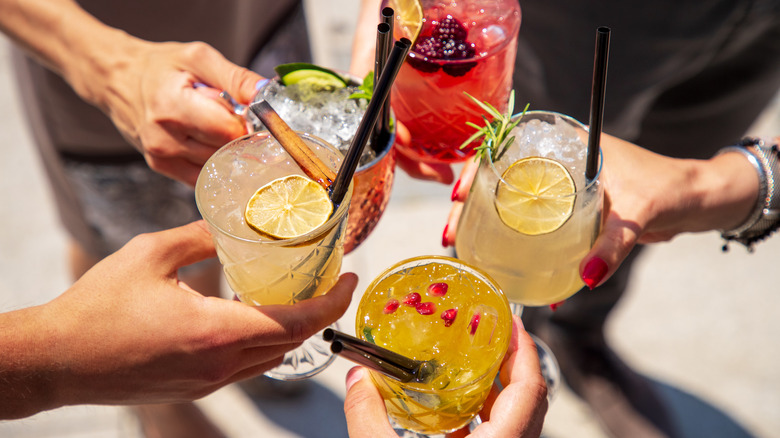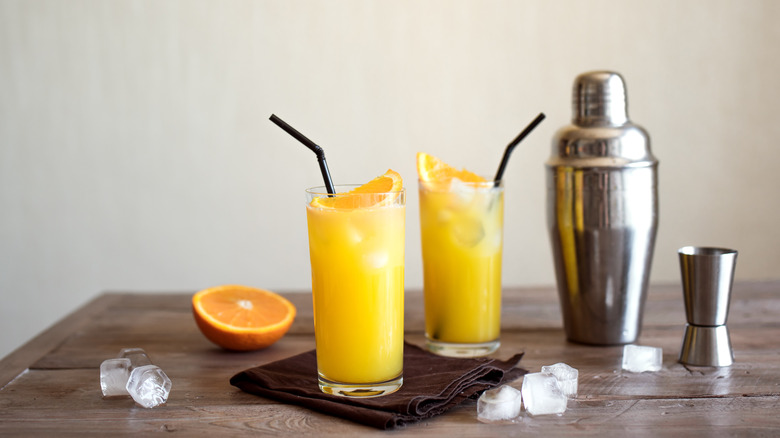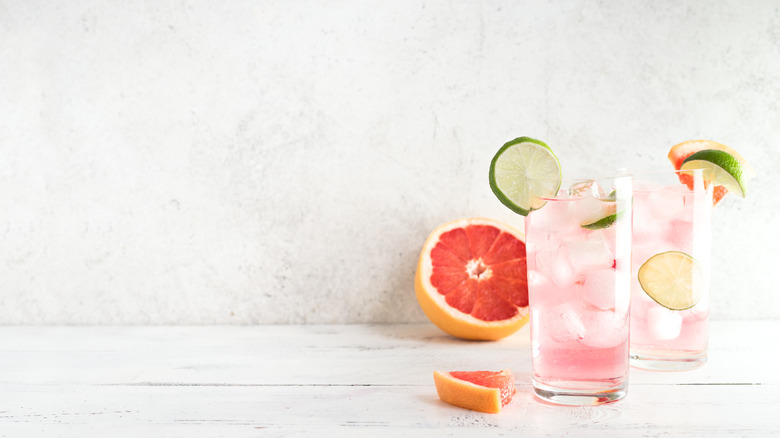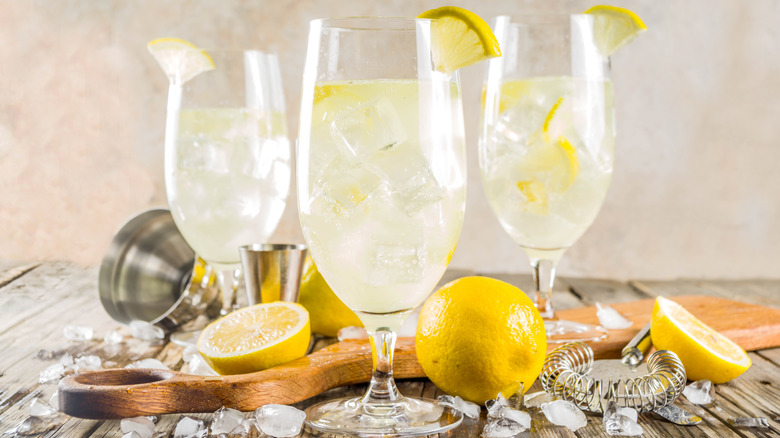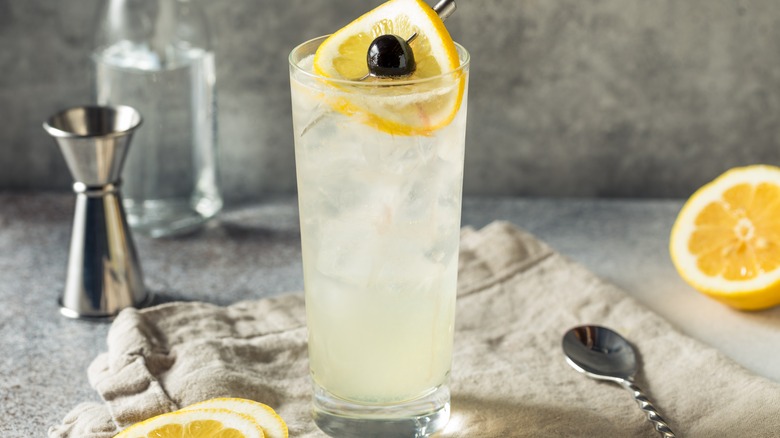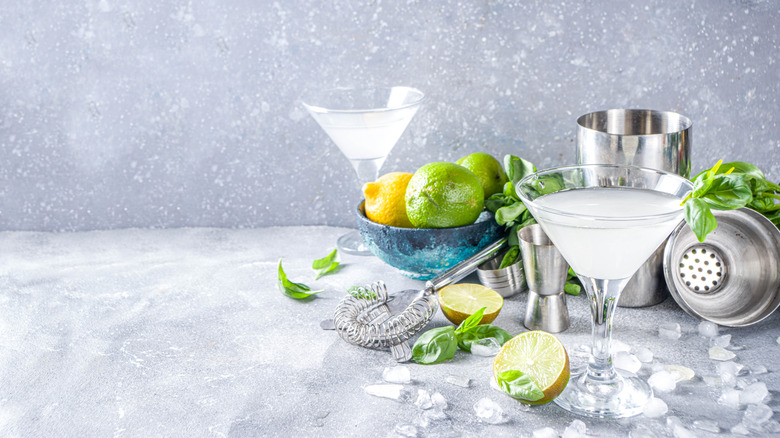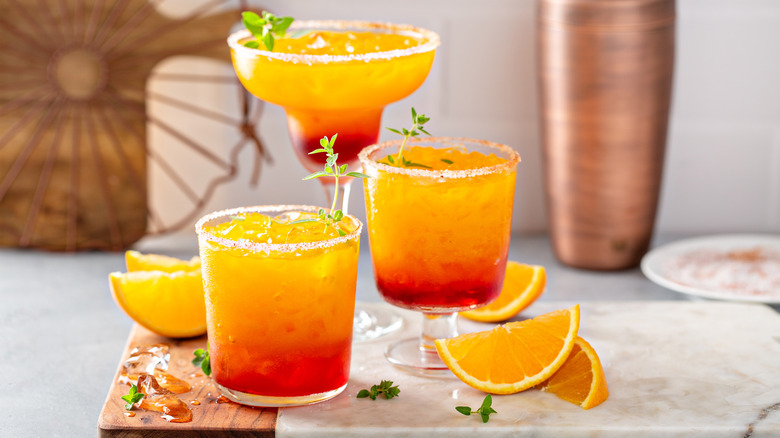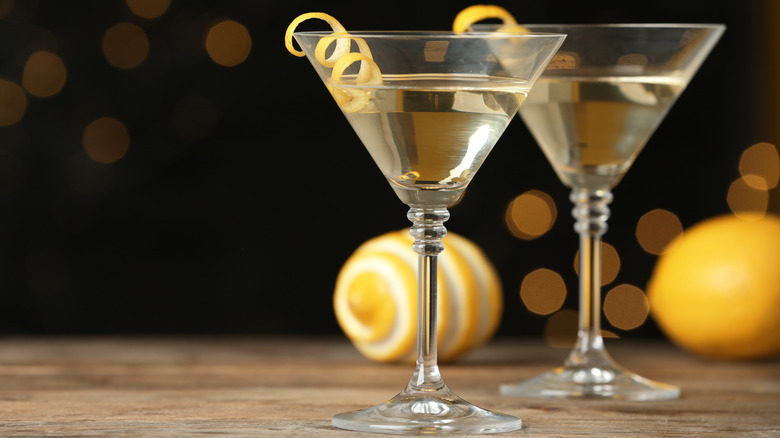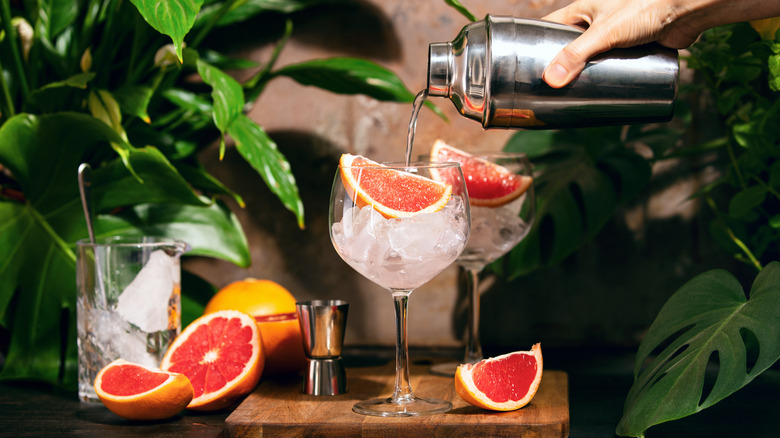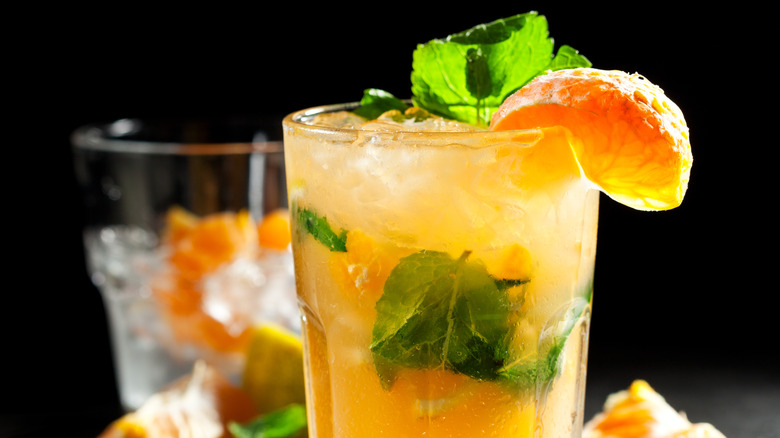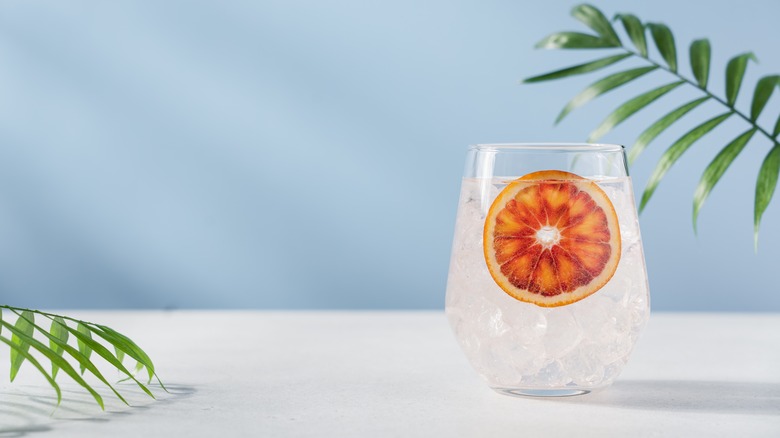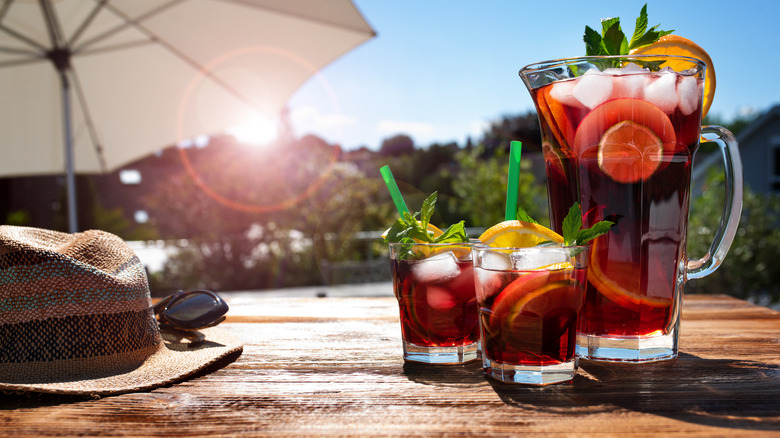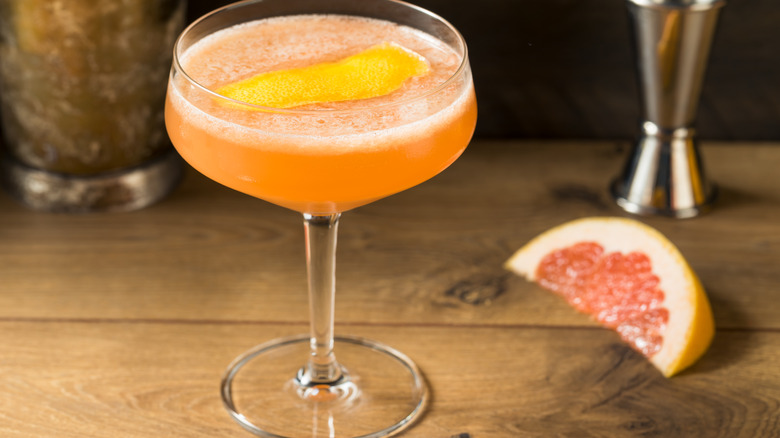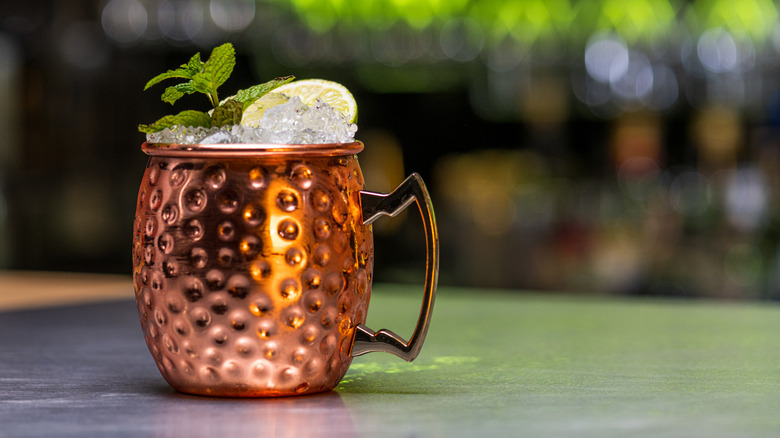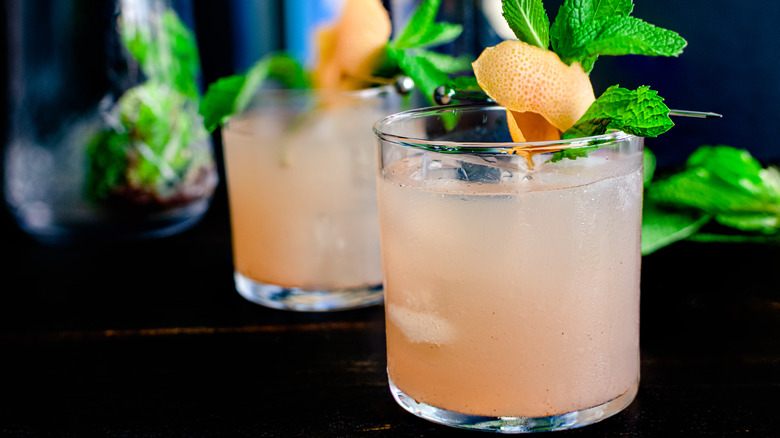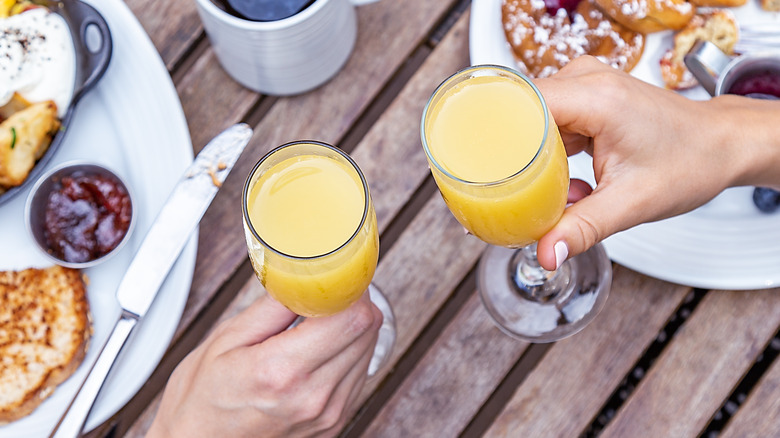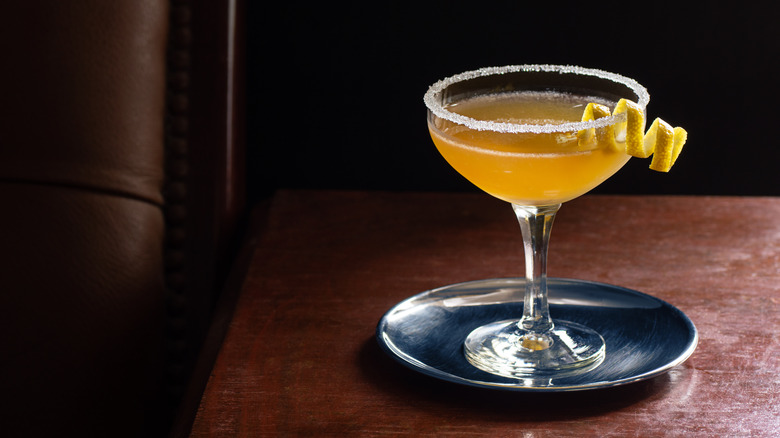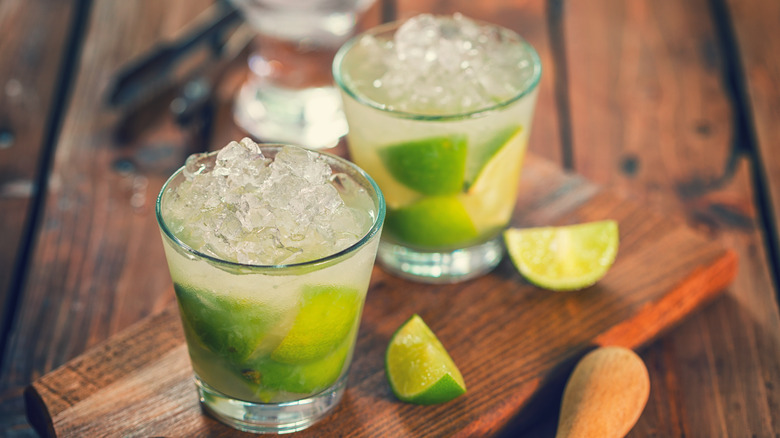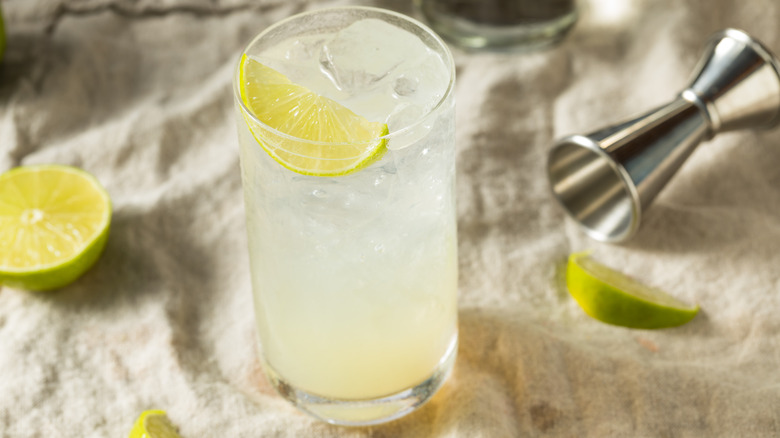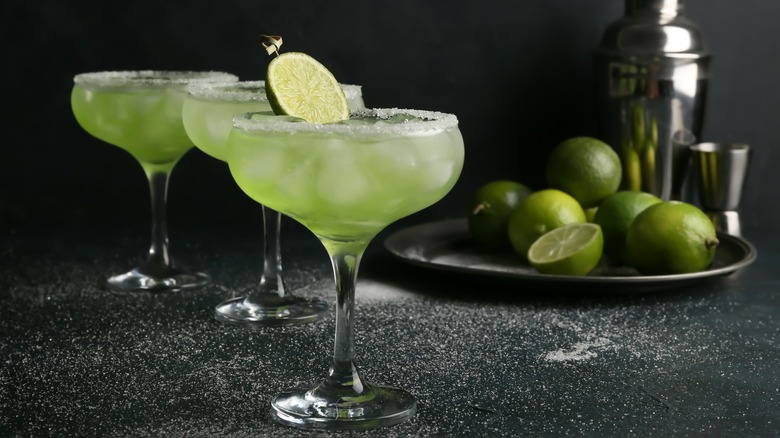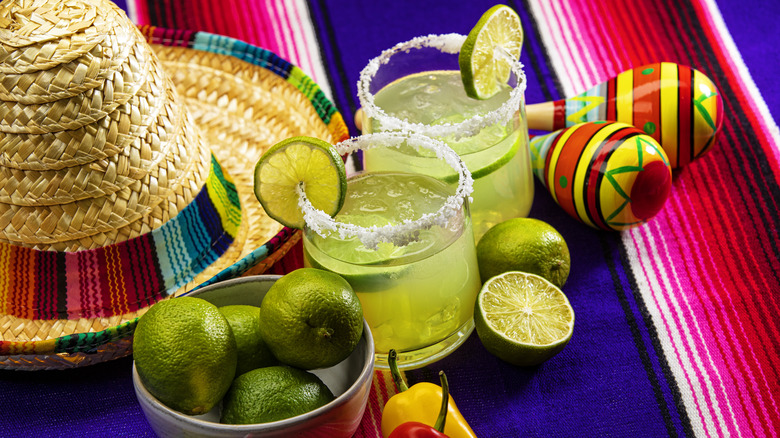The 20 Best Citrus Cocktails
Zesty and refreshing, citrus-based cocktails are perennially popular in the mixology world. Such fruity concoctions are a natural, go-to choice for imbibing outdoors in warmer months, but can also bring a drop of citrus sunshine to darker days.
Citrus fruits are super fruits — lemons, limes, oranges, mandarins, and grapefruits, to name a few — are packed full of antioxidants, bursting with vitamins (especially vitamin C), low in calories, and high in fiber. They also work rather well with a large range of spirits, whether by using citrus juice in cocktails, adding a flavor pop with the fruit's zest, or simply garnishing drinks with a slice of sunshiney goodness. The acidity in citrus fruits can work to temper any "burn" you might experience from the ethanol in the alcohol. From simple three-ingredient mixes you can make in minutes to more complex creations that you can tweak to suit your taste, we have a fab, fruity selection of the best citrus cocktails that we hope you'll find a-peel-ing.
Screwdriver
It could be debated that the mysteriously monikered "screwdriver" is not technically a cocktail as it's made up of just two ingredients: vodka and orange juice. In some parts of the world, asking a barman for a screwdriver would get you a blank look. In the U.K. for example, the drink is simply known as a "vodka and orange." We've included it in this roundup as it's a classic duo that perfectly represents the orange cocktail category.
Because there are only two elements to a screwdriver, it's essential you get the ratio right. A screwdriver is a long drink, served over ice in a highball glass. Once you've added the vodka measure to your glass simply fill to the top with your OJ. If you did want to fancy things up, you can add a few dashes of Angostura bitters to lend some complexity to the taste.
Sea breeze
You could argue that a sea breeze is more about the cranberry juice than the grapefruit, after all the cranberry is what gives the drink its delicate, rosy color, but the grapefruit adds to the dry, tart flavor a sea breeze delivers. This summery beverage is served in a tall glass with ice and a slice of lime to add a vibrant garnish with a contrasting color.
Vodka provides the boozy base to this drink, then the fruit juice should be added in a 2-to-1 ratio, so 4 fluid ounces of cranberry to 2 ounces of grapefruit. Using fruit juice from a carton is perfectly acceptable when you're mixing a sea breeze, so this makes for a handy store cupboard cocktail you can stock up on the ingredients in advance.
St. Germain Champagne cocktail
While Champagne purists might argue that such an expensive ingredient is wasted when diluted with other elements, a Champagne-based cocktail screams luxury, and the St. Germain Champagne cocktail, with its elderflower and lemony citrus notes, also brings a certain elegance to the mix.
If you're wondering what elderflower liqueur is, just know it's a vodka-based liqueur that is infused with fresh, floral elderflower blossoms. You can home-brew elderflower liqueur, or take the easy option and invest in a bottle of France's St. Germain. Made from hand-picked blossoms, each bottle of St. Germain has been brewed with up to 1,000 of the very best blooms. Add your Champagne, a dash of gin, some simple syrup, and fresh lemon juice to taste, and you're all set to get seriously refreshed.
Tom Collins
While a slice of lemon used as a garnish in a classic gin and tonic is considered de rigeur, a Tom Collins cocktail ups the citrus stakes by adding in an entire cup of freshly squeezed lemon juice. Combined with a healthy dose of gin, some sugar syrup to combat the tartness of the juice, and topped off with a generous serving of club soda, the Tom Collins is a refreshing long drink that works just as well during a lazy afternoon at a beach bar or as a pre-dinner cocktail in a fancy restaurant.
Arguably a staid option compared to more modern, adventurous cocktails, the Tom Collins has stood the test of time with early references to the drink dating back to the late 19th century. Traditionalists should note a true Tom Collins should be made with Old Tom gin, many versions of which are produced on both sides of the Atlantic. Old Tom gin has an underlying sweetness compared to a dry gin which helps balance the complex flavors found in a Tom Collins.
Finally, how you serve a Tom Collins matters, although in a pinch you can present the cocktail over ice in a highball glass, a taller, more narrow Tom Collins glass gives you the extra capacity to let this classic cocktail shine.
Gimlet
A gimlet cocktail represents the classic gin n' juice genre, keeping things simple with just three ingredients that deliver a massively citric flavor punch. This powerful quaffing experience is considered to be how the gimlet got its moniker, named after the "gimlet" hand tool that creates piercing holes.
The gimlet has an interesting historical provenance; it's thought to be the invention of British sailors. In the 18th century, sailors would spend months at sea which put them at risk of scurvy, a disease caused by lack of vitamin C found in fresh fruit and vegetables which were not readily available aboard ships. Sailors were issued doses of lime juice to keep scurvy at bay, to make this more palatable they mixed the juice with gin, creating what we now call the gimlet.
It could be argued that a "proper" gimlet should be made with freshly squeezed lime juice, but there are some aficionados of a gimlet made with a sweeter lime cordial. This version of the drink gets a notable literary nod in Raymond Chandler's "The Long Goodbye" with one of the characters stating, "A real gimlet is half gin and half Rose's Lime Juice and nothing else."
Tequila sunrise
A tequila sunrise is a retro classic that has its roots in the rock and roll scene of 1970s California. As legend has it, after trying the drink at the Trident music venue in Sausalito, the Rolling Stones used the cocktail, along with cocaine, as their main fuel for their legendary 1972 tour. A year later the Eagles immortalized the drink with their single of the same name.
There are many variations on the tequila sunrise; tequila, orange juice, a squeeze of lemon or lime, and grenadine syrup to create that two-tone effect are essentials, but some recipes add in orange liqueur and creme de cassis to up the intoxication levels. Which tequila you choose to use in your version of a tequila sunrise is down to you, but it's generally thought a blanco, or silver, tequila works best thanks to its citrus tones.
Lemon drop martini
If you're partial to lemon-flavored cocktails, a lemon drop martini is a must-have in your mixology recipe book. A lemon drop martini brings a double hit of citrusy goodness, combining fresh lemon juice with orange liqueur, vodka, and simple syrup to combat the tartness of the lemon. Created by shaking the ingredients in a cocktail shaker, a lemon drop martini should be served in an elegant martini glass rimmed with sugar.
The kind of vodka you use in this drink is down to what you've got in your cocktail cabinet, but if you want to go all out with the lemony theme, we do recommend investing in a bottle of specialist lemon vodka, such as Absolut Citron, which is infused with lemon juice and intense flavor from lemon peel.
Paloma
We're sticking with tequila for our next cocktail pick; the refreshing Paloma, and adding in a new citrus element — the humble grapefruit. While you may first think of a margarita when you consider Mexican cocktails, the Paloma is widely accepted as the nation's favorite alcoholic beverage.
This "lazy man's margarita" has different levels of complexity. At the super-simple end of the spectrum, a Paloma can be a shot of tequila topped up with grapefruit soda (Arizonan brand Squirt comes out as a top choice). Alternatively, you can fancy it up with freshly squeezed grapefruit juice, club soda, lime juice, agave nectar or simple syrup, and a salt-rimmed glass.
If you are going with freshly squeezed grapefruit, consider the type. As a general rule, red grapefruit is sweeter than white grapefruit so both types will bring a different flavor profile to your cocktail mix.
Mandarin mojito
Mandarins are a cool, contemporary choice for a cocktail ingredient, offering an interesting alternative to oranges. Mandarins are smaller and sweeter than regular oranges, and often easier to peel, so are ideal for lazy mixologists. It's not just mandarins that can be used in this cocktail recipe; tangerines, clementines, and satsumas (all part of the mandarin family) can be swapped in depending on what ingredients you can get hold of.
This recipe simply takes the classic mojito mix and adds in mandarin juice to give it a sweet, citrusy makeover that makes for a lovely long cocktail drink served over ice cubes or crushed ice. To create a mandarin mojito you simply need to combine your choice of rum, fresh lime juice, simple syrup, your mandarin juice, a handful of mint leaves, and top up with club soda to taste. This is a great cocktail to make in pitchers to enjoy with friends in the summer.
The key to the mint element, which contrasts beautifully with the sweet orange notes, is to "smack" your mint rather than muddle or crush it. Smacking the herb accentuates the leaf's oils, enhancing the overall taste.
St. Clements
If you can't decide between lemon or orange, why not choose both? A St. Clements brings a fresh and fruity orange and lemon combo that started life as a sophisticated summer mocktail but can easily be given the grown-up treatment with the addition of some lovely booze. Which booze you choose is down to personal preference, a good quality gin works especially well in a St Clements, but vodka, triple sec, or even vermouth can be used singularly or in mixed quantities — it's rather fun to experiment to see which mix rocks your boat.
The citrus elements are likewise very flexible. A St. Clements must contain an orange and a lemon ingredient, but they can encompass freshly squeezed juices, pre-prepared juice, cordial, lemonade, orangeade, bitter lemon, and even lemon bitters. This is another zesty, summery drink that works well served in jugs or pitchers.
When you are enjoying this with friends or family, you can regale them on how the drink got its name, from an old British nursery rhyme about the different sounds London church bells made. "Oranges and lemons, say the bells of St. Clements" is the inspiration behind this delicious drink.
Sangria
Sangria typically is a mix of red wine and orange juice. Often presented in large pitchers, sangria is served cold and traditionally contains chopped fruit. What fruit you use is entirely up to you. Slices of orange and lemon look appealing and add to the citrus vibe. Some recipes call for sliced apples and pears, and stone fruit isn't off the table. If you pre-freeze grapes and add them into the mix they will help keep your sangria cool without diluting the mix with melting ice cubes.
If you're enjoying sangria as a daytime drink, you may want to consider toning it down slightly with the addition of sparkling water or lemonade. Alternatively, you can max the alcohol levels with a cheeky shot of brandy.
Brown derby
The brown derby is a sophisticated cocktail that mixes rich bourbon, tart grapefruit juice, and sweet, earthy honey. Because of the interesting mix of flavors, it's a drink that needs to be well-balanced, so practice makes perfect when nailing the ideal brown derby mix. There are notable exceptions to the brown derby mix — it is possible to make the drink with whiskey if bourbon isn't to your taste.
Some mixologists prefer to use maple syrup instead of honey, or honey syrup, preferring the "tang" syrup offers the drink. Whichever ingredients you choose to go with, this needs to be shaken in a cocktail shaker and strained into a chilled glass. Naturally, a grapefruit wedge is a traditional garnish.
Moscow mule
The Moscow mule is said to be a drink that was invented out of necessity; in the 1940s, a Californian bar owner had to shift cases of both ginger beer and vodka, so combined the two, added in fresh lime juice, and a new cocktail was born. Vodka at the time was a relatively unusual ingredient to the average American, and the fact the drink was served in instantly recognizable copper mugs made the drink a cult classic.
The copper serving vessel helps keep the drink cool, and the mug's handle stops the warmth from your hand transferring to the drink. While this is traditionally a summer cocktail, there's an interesting autumnal riff that sees apple cider and a cinnamon stick added into the mix to create a warming fall favorite.
Greyhound
A Greyhound is an unusual cocktail in that you can make it with your choice of spirits. The grapefruit juice ingredient is an essential element, but depending on your personal preference, you can use either vodka or gin.
The kind of grapefruit juice you opt for depends on what you have to hand, shop-bought grapefruit juice is fine, but there's no denying this tastes better with freshly squeezed juice, and we prefer ruby grapefruit because of the pretty pastel tones it offers. The name Greyhound is said to come from the fact this used to be a popular brunch cocktail at Greyhound bus terminals.
Mimosa
A mimosa is a brunch beverage that is always in style. A simple combination of fizzy white wine and orange juice, it's refreshing and slightly cheeky. In some parts of the world, a mimosa is known as a "Buck's Fizz." In the U.K., it's tradition to drink Buck's Fizz as part of Christmas Day breakfast. If you want to keep this light as a drink to accompany brunch that will give you a gentle buzz and a refreshing hit, then just keep the mix simple with the fizzy white wine and your choice of orangey citrus juice.
Alternatively, if you're looking for more of an alcohol hit, consider adding a dash of an orange spirit such as Gran Marnier, Cointreau, or Triple Sec. The kind of wine you opt for is down to your taste — and budget. Champagne is the top-drawer choice, but a more affordable cava is perfectly doable.
Sidecar
A Sidecar is a relatively forgiving cocktail when it comes to its two main spirit ingredients, brandy and orange liqueur, but if you want to make a textbook Sidecar, you need to use a proper Cognac brandy and Cointreau. A healthy dose of an ounce of freshly squeezed lemon juice is non-negotiable. Cognac is a particularly high-quality brandy, and to enjoy the "Cognac" moniker, it needs to be made from white grapes in the Cognac region of France.
A Sidecar cocktail is made in a traditional cocktail shaker filled with fresh ice. Shake all the ingredients together in the shaker, then carefully strain the delicious mix into a shallow coupe cocktail glass. Bonus points if you first coat the rim of the glass with sugar.
Caipirinha
Caipirinha is notable for being Brazil's national cocktail. It's made with three simple ingredients — Brazilian cachaça liqueur, sugar, and lime. To make a caipirinha, you simply muddle a couple of lime wedges with sugar, chuck in a handful of ice cubes, or shaved ice if you want more of a slushy constituency, and top up the mix with as much cachaça as you can handle. You can leave the muddled lime in the glass to maximize the flavor and garnish with a slice of lime.
Cachaça is a sweet spirit made from fermented sugarcane juice. Like rum, cachaça comes in two varieties, there's a more affordable, un-aged white spirit that is typically used in tropical cocktails and a wooden barrel-aged yellow, or gold version that's meant to be drunk neat.
Rickey
A gin rickey is a great way to enjoy the powerful flavor of your favorite gin, enhancing it only with a simple twist of fresh lime juice. Compared to the classic gin and tonic, a rickey uses club soda, so it is an ideal choice of beverage for anyone watching the calories, or for anyone who doesn't enjoy the stringent taste of tonic water.
We'd recommend using a dry London gin if you want to enjoy a juniper-infused gin "hit," but alternatively you can use a more gentle, floral gin by opting for a spirit with a botanical blend. Rose and lavender-flavored gins are worth considering when making a rickey, and these flavors contrast well with the citric lime juice, offering a balanced sip perfect for a summer day.
Daiquiri
The daiquiri is a classic, rum-based cocktail that works brilliantly as a standalone tipple or can pair well with a Cuban or Mexican-themed dinner menu. The cocktail has just four simple ingredients; light, or white, rum, some kind of sugar syrup, lime juice, and lime to garnish. Demerara syrup is recommended for the sweet element, the darker type of sugar will bring a warm and toasty richness that a white sugar-based syrup won't.
As far as the rum element goes, any blanco rum will work in a daiquiri, but Diplomatico's "Planas" aged white rum comes highly recommended. This rum, aged for up to six years, brings fresh and tropical notes, and a super-silky finish, to add a sophisticated twist to your daiquiri's delicious flavor profile.
Margarita
The dangerously delicious margarita delivers everything you could want from a cocktail; that heady booze hit from the tequila, a lingering sweetness from the orange liqueur, and that citrus punch from freshly squeezed lime juice. This timeless recipe is massively popular around the world, and if you can ace the balance of those three ingredients you have got a classic cocktail concoction you can draw on for all occasions, and one that's easy to make your own adjustments to.
